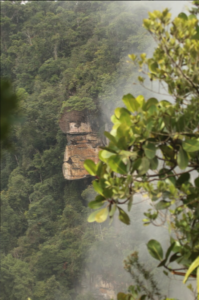By Odeen Ishmael
Once upon a time, there was a little village on the Potaro River, just above the huge waterfall now known as Kaieteur. In that same region was a large stretch of grassland where several animals like deer and anteaters lived. Near the village too, the people cultivated farms of cassava, sweet potatoes, corn and green vegetables.




